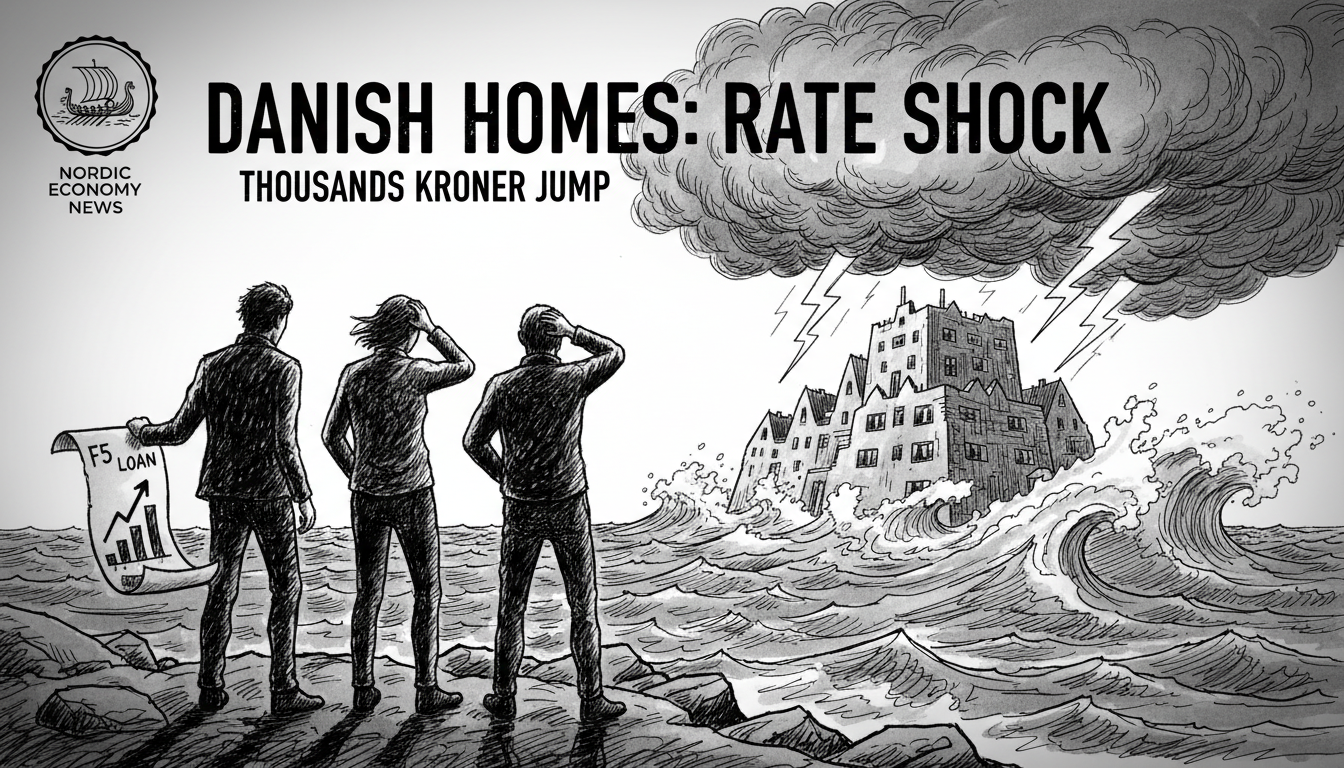Thousands of Danish homeowners are bracing for severe financial impact as their F5 loans reset with dramatically higher interest rates. These borrowers enjoyed five years of historically low rates, some even receiving money to borrow, but that era ends abruptly in January.
The situation represents a perfect storm for flexible-rate mortgage holders. F5 loans, which reset every five years, are jumping from negative territory to positive rates around 2.66%. At Nordea, the increase amounts to 2.9 percentage points, creating immediate budget pressure for affected households.
What does this mean in practical terms? For a typical one million kroner interest-only loan, monthly payments after tax will surge from 460 kroner to 2,060 kroner. That's an extra 1,600 kroner monthly per million borrowed. In expensive areas like Copenhagen and Aarhus, where three million kroner mortgages are common, families must find an additional 4,800 kroner monthly just for their mortgage payments.
This translates to 57,600 kroner annually that previously funded discretionary spending now redirected to interest costs. The timing couldn't be worse with ongoing inflation pressures affecting other household expenses.
Nordea's chief analyst Lise Nytoft Bergmann offers some perspective. She notes these borrowers actually benefited from timing. Their rates remained low during recent years of rising interest rates. Two years ago, F5 rates reached 3.50%, meaning current borrowers avoided that earlier spike.
Many homeowners saw this coming and took action before the October 31 deadline. Some switched to different loan types, including FlexKort loans that reset every six months. According to current projections, FlexKort could become the cheapest option in 2026 with rates between 1.9-2.2%.
Meanwhile, other Danish mortgage holders get relief. F1 loan rates are dropping to approximately 2.30%, while F3 rates are falling to around 2.34%. F3 borrowers with interest-only loans will see nearly 500 kroner monthly savings per million borrowed over the next three years.
The divergent experiences highlight Denmark's complex mortgage system where timing determines financial fate. While F5 borrowers tighten their belts, F3 borrowers gain breathing room, creating a tale of two housing markets within the same economy.
This situation reflects broader Nordic housing market dynamics where flexible-rate mortgages remain popular despite interest rate volatility. The shock serves as a reminder that historically low rates don't last forever, and Danish homeowners must constantly navigate shifting financial landscapes.

